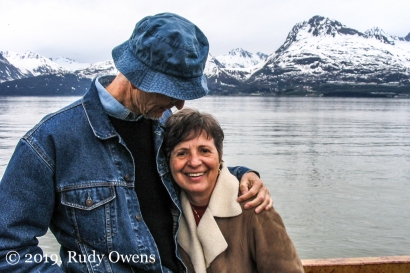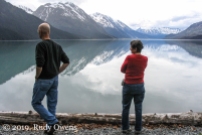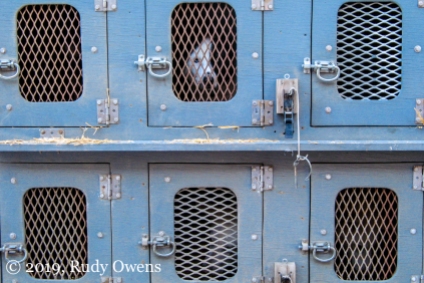









(Click on each photo to see a larger picture on a separate picture page.)
In late winter 2021, trail users on Portland’s Springwater Corridor were suddenly greeted with Northwest, Coastal Salish, and Alaskan Native imagery on utility towers and graffiti-covered surfaces of the Ross Island Bridge.
The artist, Stephen Cutler, appears to be a Portland-based creator who has been using Native imagery for years in his work. I do not know if he has Native ancestry or if he has worked with Native artists. I also do not know if groups whose iconography he uses have weighed in on these creations.
Appropriation of Coastal Salish, Tlingit, Haida, and other tribal cultural traditions has been going on for decades, sparking controversy about the rights of non-Native persons to use traditions that are not theirs. These important discussions about cultural appropriation have not ended—and the voices of those whose traditions are being used by others needs to be centered in all discussions and displays of such work.
At the same time, I also know that art is never meant to remain static. It never has been as long as humans have created art since they first painted wild animals in caves many millennia ago. Creation involves taking ideas and inspiration from others and reinventing those creations to make something new. In addition, anyone from the public who encounters art, I believe, can both like something that is beautiful and question the larger story around it.
As for these new murals, I like them, aesthetically. They are vital. They adhere to beautiful traditions I have seen first-hand in Southeast Alaska and British Columbia, including in living studios of Native and First Nations artists in those places. These pieces also bring life to an area that is shared by the public. It is a space used all residents for biking, hiking, walking, and other sports, and it is a de facto home to Portland’s large houseless population, who live in the elements a stone’s throw from where you see these pieces. So far, no graffiti artists who tag the concrete and steel spaces in this area have covered these pieces. It appears there is respect by that community too.
If you find yourself in Portland, take a stroll. They pieces can be found just underneath the Ross Island Bridge, on the east bank of the Willamette River.






















































